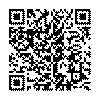 |
Pontifícia Universidade Católica do Rio de Janeiro O departamento de Química |
||
|
|
Professor Volodymyr ZaitsevProfessor, D.Sc., PhD, Corr. Member Acad. of Sci. of Ukraine Links: |ORCID | LinkedIn| SciProfiles | GoogleScholar | Instagram | FaceBook | YouTube | |
 |
|
| | List of publications | Research projects | My research group | Teaching | Research interests | Biography | For Ph.D. students | Photos | CV |
|
||
VOLODYMYR TURCHENIUK
Functionalization and modification of nanoparticles and their biomedical application
THESE DE DOCTORAT présentée à L’UNIVERSITE DE LILLE 1
Ecole Doctoral Régionale Sciences Pour l’Ingénieur Lille Nord-de-France
pour obtenir le grade de DOCTEUR EN SCIENCES Dans la spécialité: Micro et Nano
Technologies, Acoustique et Télécommunications
Soutenue le 3 OCTOBER 2016
Directeur de Thèse : Pr. Sabine SZUNERITS, Professeur,
Université Lille 1
Co-Directeur de Thèse : Pr. Vladimir ZAITSEV, Professeur, Kiev National
University
ABSTRACT
Functionalized nanoparticles continue to attract interest in biomedical applications and bioassays and have become a key focus in nanobiotechnology research. The use of nanomaterials in biomedical applications is of great interest since their size scale is similar to biological molecules and structures. One of the primal focus of the research work was the development of versatile surface functionalization strategies for different nanoparticles ranging from diamond nanostructures to gold nanorods and nanocomposites. One particular aim was the use of reduced grpahene oxide (rGO) and silica coated gold nanorods for the photothermal and photodynamic ablation of pathogens. Embedding of verteporfin, a clinically approved photosensitizer, into silica-coated gold nanorods allowed an efficient eradication of a virulent strain of E. coli associated with urinary tract infection. The great heating effect of graphene-coated gold nanorods when illuminated with a near-infrared laser allowed for a photothermal destruction of the same pathogenic strain. In parallel, we have shown the interest of using diamond nanoparticles (NDs) modified with menthol as well as different sugars as antibacterial agent against Gram-positive (Staphylococcus aureus) and Gram-negative (Escherichia Coli) bacteria. We developed a strategy for the covalent attachment of sugars by taking advantage of the photochemistry of arylazides, which upon light activation convert to reactive nitrenes. The highly reactive nitrene intermediate formed is believed to interact with glycans through C-H and N-H insertion reactions, creating highly robust covalent linkages. The resulting glyco-NDs maintained their expected binging affinity and specificity towards their partner lectins. Through a fluorescent based agglutination assay, we showed that mannan-NDs display E. coli agglutination at concentrations of ≈10 µg mL-1, being much lower than free mannan and mannose-NDs.
Laboratório de adsorventes para análise química, proteção de ambiente e biomedicina (LAQAPAB)
Departamento de Química,
Pontifícia Universidade
Católica do Rio de Janeiro (PUC-Rio)
tel: +55 21 980551969,
e-mail: vnzaitsev@puc-rio.br,
http://zaitsev.usuarios.rdc.puc-rio.br
| | google scholar | researchgate | ResearcherID| LinkedIn | |
 ORCID ORCID |